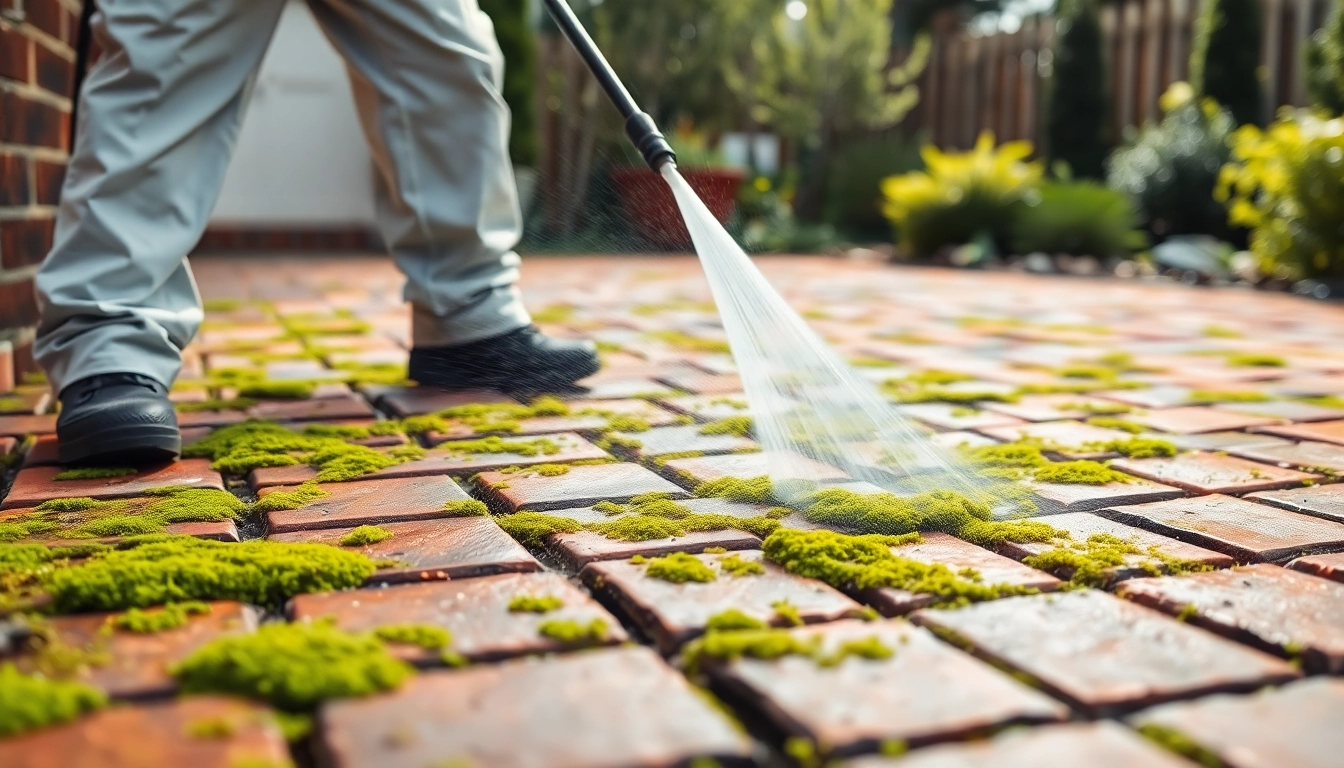Understanding Organic Growth: Causes and Risks
What is Organic Growth?
Organic growth refers to the natural increase of biological organisms, including mold, moss, algae, and fungi, that can flourish in residential and commercial settings, particularly in moist environments. This growth is not only unsightly but can also lead to significant structural damage if not managed properly. Understanding organic growth is critical for homeowners and property managers to maintain the integrity and aesthetic appeal of their properties.
Common Types of Organic Growth in Your Home
In most households, organic growth manifests in several noticeable ways:
- Mold: Typically found in damp areas such as bathrooms and basements, mold can pose serious health risks.
- Algae: Often seen on outdoor surfaces like sidewalks and decks, algae can create slip hazards.
- Moss: This can accumulate on roofs and lawns, potentially leading to structural issues if it retains moisture on shingles.
- Fungi: These organisms thrive in dark, damp environments and can cause extensive damage over time.
Health and Structural Risks of Neglecting Organic Growth
Neglecting organic growth can expose inhabitants to various health issues, including respiratory problems and allergic reactions. Structurally, it threatens the integrity of buildings by:
- Harboring moisture that can erode building materials.
- Providing a breeding ground for pests.
- Decreasing property value due to visible decay.
DIY vs. Professional Organic Growth Removal Methods
Safe DIY Techniques for Organic Growth Removal
Many homeowners opt to try DIY methods for removing organic growth. Some effective techniques include:
- Power Washing: A powerful tool, particularly for driveways and patios, this method incorporates high-pressure water to dislodge organic matter.
- Natural Solutions: Vinegar and baking soda serve as an eco-friendly option for small areas of mold and mildew.
- Scrubbing: Using a stiff brush can help remove visible signs of growth from surfaces, especially wood and decking.
When to Call the Professionals for Organic Growth Issues
While DIY methods can be effective, some situations warrant professional intervention:
- Widespread mold or growth covering large areas.
- Presence of hazardous materials, such as black mold.
- When health risks are involved, particularly for vulnerable populations.
Cost Comparison: DIY vs. Hiring Experts
The cost to remove organic growth can range significantly. DIY methods can be low-cost but labor-intensive, typically ranging from $50 to $200 depending on the tools and materials used. In contrast, hiring professionals can cost between $300 and $2,000, depending on the size of the area and the severity of the growth.
Best Practices for Organic Growth Prevention
Regular Maintenance Tips to Prevent Organic Growth
Preventing organic growth begins with regular maintenance. Here are effective strategies:
- Routine Cleaning: Regularly pressure wash surfaces to remove spores and prevent growth.
- Gutter Maintenance: Clean gutters to ensure water flows freely, preventing moisture buildup.
- Ventilation: Improve airflow in attics and basements to reduce dampness.
How Landscaping Choices Impact Organic Growth
The landscaping around your home can either contribute to or prevent organic growth. Properly placing plants and ensuring adequate drainage can reduce moisture and shade, discouraging growth. You should avoid overwatering plants and use mulch wisely.
Seasonal Considerations for Managing Organic Growth
Different seasons bring varying environmental factors that influence organic growth. In humidity and warmth, growth proliferates. Fall and spring are vital for prevention; it is essential to clean area surfaces and inspect for early signs of growth. Implement routine checks after rainy seasons, as moisture is a key catalyst for biological growth.
Tools and Products for Organic Growth Removal
Top Recommended Tools for Effective Removal
Various tools can assist in effectively removing organic growth:
- Pressure Washers: Ideal for large outdoor surfaces, these can rapidly remove tough stains.
- Scrub Brushes: Essential for smaller areas; they provide manual power to scrub away debris.
- Protective Gear: Protect yourself when using chemical solutions or working with mold.
Choosing the Right Chemicals for Safe Organic Growth Removal
Selecting the right chemical is crucial. Look for eco-friendly options that target specific types of growth. Some proven solutions include:
- Bleach: Effective for mold removal but should be used with caution.
- Commercial Cleaners: Many products on the market specifically tackle mold and algae.
Comparison of Pressure Washers vs. Other Removal Methods
Pressure washing is often the most effective method for large areas and tough stains, while other methods may be better suited for small or localized issues. Whereas pressure washing can damage delicate surfaces, products like vinegar or specific cleaning solutions offer a gentler approach.
Measuring Success: How to Assess Organic Growth Removal Effectiveness
Signs of Successful Organic Growth Removal
To determine whether organic growth has been effectively removed, monitor for:
- No visible growth after treatment.
- Reduction in musty odors indicative of mold.
- Absence of stains or discoloration on surfaces.
How to Monitor Home Health Post-Removal
Post-removal, consider maintaining a regular inspection schedule to catch any recurrent growth. A hygrometer can help measure humidity levels, as maintaining a low humidity level prevents growth.
Long-Term Maintenance Strategies for a Growth-Free Home
Long-term strategies include regular maintenance and keeping areas well-ventilated. It’s also advisable to perform annual inspections and consider the installation of dehumidifiers in moisture-prone areas.


